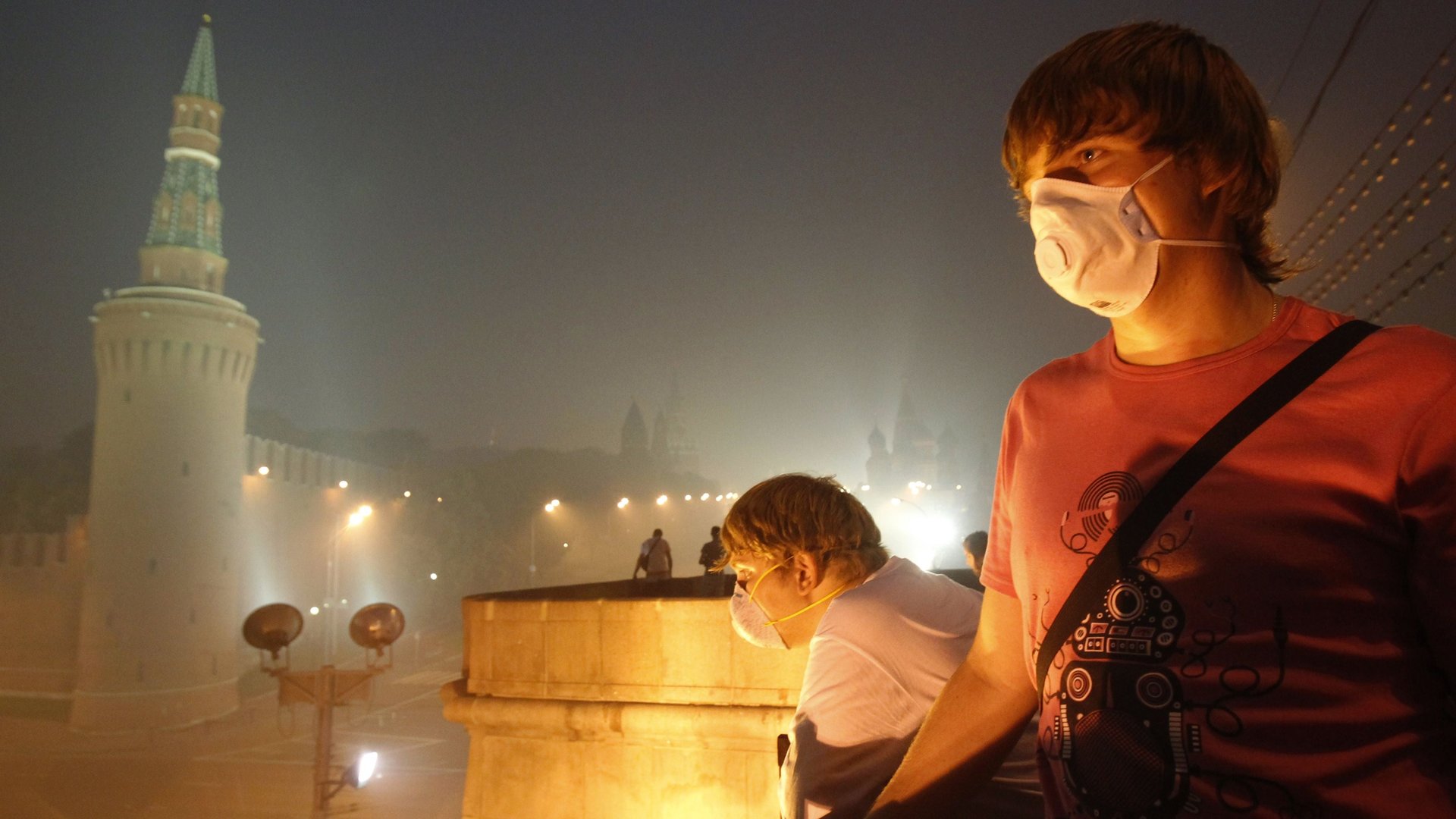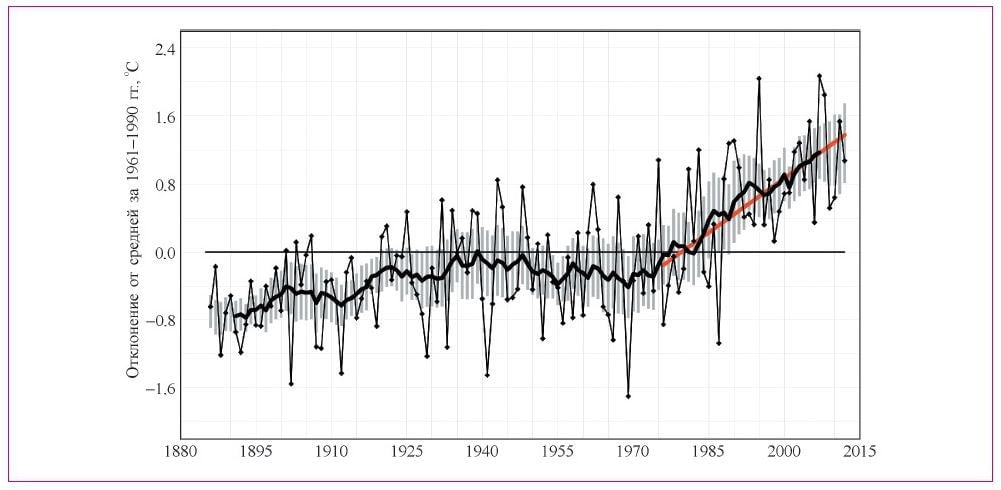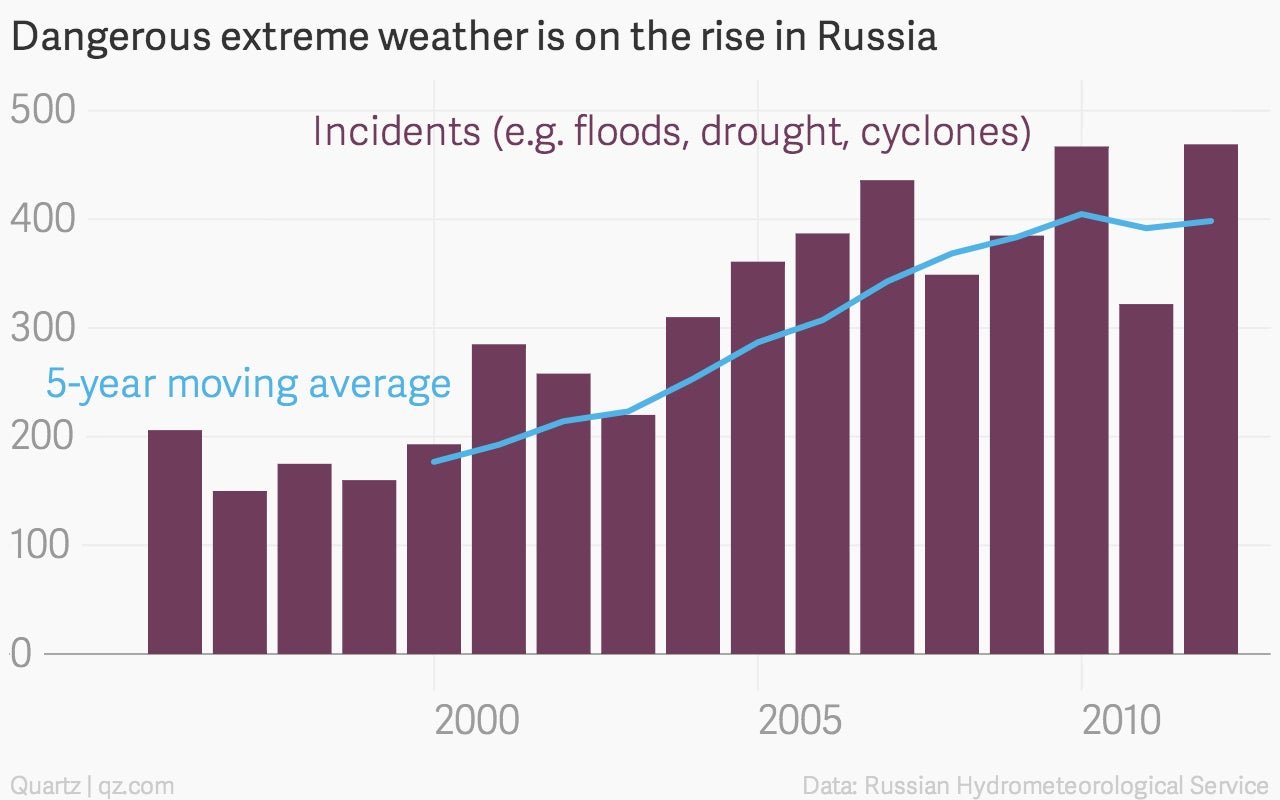Russia’s warming faster than the rest of the planet—and seeing disease, drought, and forest fires as a result
When Vladimir Putin declined to support the Kyoto Protocol, a treaty to limit carbon emissions, he famously quipped that higher temperatures might actually benefit Russia since its people would have to spend less on fur coats.


When Vladimir Putin declined to support the Kyoto Protocol, a treaty to limit carbon emissions, he famously quipped that higher temperatures might actually benefit Russia since its people would have to spend less on fur coats.
Well, he’s getting his wish. Changes in wind and ocean currents caused by global warming shift heat around unevenly, causing some areas to heat up dramatically even as other regions cool. Russia, it turns out, is in the unusually hot category. Between 1976 and 2012, average Russian temperatures rose 0.43°C (0.8°F) a decade—more than twice the global average of 0.17°C—according to a new report out by Russia’s climate and environment agency (pdf, link in Russian).

This is a big problem for a variety of reasons, say Russia’s climate scientists. Hotter temperatures appear to be driving a spike in episodes of dangerous extreme weather:

The frequency of forest fires (Russian) in the Siberian taiga, Evenki, and Khabarovsk regions and in the far northeast have surged between 30% and 50% in the past two to three decades.
Those extreme-weather episodes are taking their toll on Russians’ health. The report notes that the forest fires that often accompany summer heat waves give off noxious fumes. In 2010, this smog caused Moscow mortality rates to double.
Balmier climes are also making Russia more hospitable for certain diseases. The report notes that by 2010, the breeding ground for harmful insects was twice what it was in 1973. This trend, says the report, is linked with a flare-up of West Nile virus in the last 15 years, as well as an expanded range of Crimean hemorrhagic fever and tick-borne encephalitis.
One of the arguments that Putin and others have advanced in favor of global warming is that it will make more of Russia’s land arable. The report notes that is happening, as agriculture shifts to central and northern parts of the country. However, it’s something of a wash given that drought is also hurting output in Russia’s breadbasket region. Others note that the melting of permafrost could galvanize Russia’s mining and oil industries by making nickel, copper, diamonds, oil and natural gas more accessible.